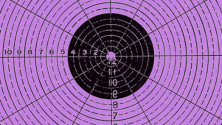This morning the U.S. Supreme Court issued an important decision concerning software patents and took a small-but-meaningful step in the right direction.
In Alice Corp. v. CLS Bank, the Court reaffirmed that abstract ideas are not by themselves patentable and unanimously held that the software at issue was no more than an abstract idea. It also held that "merely requiring generic computer implementation fails to transform that abstract idea into a patent-eligible invention."
As I reported last March, the Alice Corp. case involved a patent for using a computerized trading platform for addressing settlement risk in financial transactions—that is, basically an automated escrow system. The Supreme Court framed the question presented in broad terms, indicating that it could make a far-reaching decision on software patents. Not surprisingly, in view of the high stakes, there were dozens of friend-of-the-court briefs, one of which was from Red Hat.
The opinion by Justice Thomas uses the traditional common law methodology of comparing one case to previous similar cases and harmonizing with those most similar. The opinion discusses Bilski and prior cases and states, "[W]e need not labor to delimit the precise contours of the ‘abstract ideas’ category in this case. It is enough to recognize that there is no meaningful distinction between the concept of risk hedging in Bilski and the concept of intermediated settlement at issue here." It would have been helpful to get a fuller explanation of how to determine when a patent is too abstract, but the Court has declined, in this case and prior ones, to attempt a comprehensive theory.
Having decided that the patent involved an abstract idea, the Court then considered whether implementing that idea on a computer amounted to an inventive concept that rendered the idea patent eligible. Based on several prior decisions, the Court held that it did not. After noting "the ubiquity of computers" and the fact that they have been "long in use," the Court characterized computer implementation as "purely conventional." Thus merely implementing an idea on a computer will not be enough to make an abstract idea eligible for patenting.
This may seem obvious, but the decision below from the entire Federal Circuit bench was closely divided on the point, and there was significant support in the amicus briefing for the opposite view. The Justices could conceivably have viewed computers as more exotic and computer implementation as more transformative. Fortunately, they did not.
Common law courts typically try to decide the case before them narrowly, rather than explaining how future factually different cases will be decided. The Supreme Court followed that traditional practice here and gave little guidance on what other kinds of software would be found ineligible for patenting. It was interesting that the Court noted that the method claims did not "purport to improve the functioning the computer itself," perhaps suggesting that software that accomplished such improvements could be patent eligible. In any case, it would be mistaken to read the case as grounds for invalidating all software patents.
But it most certainly does provide a basis for invalidating some bad software patents. This is progress. As lower courts apply the Supreme Court decision, we may see more progress.







4 Comments